Table of Contents
You’re staring at your e-commerce dashboard, drowning in numbers, and wondering which metrics actually matter. Sound familiar?
The truth is, 68% of online retailers track metrics that barely impact their bottom line. They’re measuring what’s easy instead of what’s meaningful.
I’ve spent eight years helping businesses cut through the noise and focus on e-commerce KPIs & metrics that actually drive growth. Not vanity metrics that make you feel good, but actionable data that helps you make smarter decisions.
By the end of this guide, you’ll know exactly which numbers deserve your attention, how to interpret them correctly, and the specific actions to take when they change. But first, let’s talk about the one metric most store owners obsess over that’s actually misleading them…
Sales and Revenue Metrics That Drive Growth

Conversion Rate: Turning Visitors into Customers
Want to know if your e-commerce store is actually doing its job? Look at your conversion rate. This number tells you what percentage of visitors actually buy something.
A low conversion rate means people browse but don’t buy. Ouch.
Calculate it with this simple formula:
Conversion Rate = (Number of Sales ÷ Number of Visitors) × 100
If 5,000 people visit your site and 150 make a purchase, your conversion rate is 3%. But is that good? Industry averages vary:
- Fashion: 1-2%
- Electronics: 2-3%
- Health and beauty: 3-4%
Boost your conversion rate by:
- Simplifying your checkout process
- Adding customer reviews
- Creating better product descriptions
- Using high-quality images
- Testing different CTAs
Average Order Value (AOV): Increasing Revenue Per Transaction
Your AOV shows how much customers spend per order. Higher AOV = more revenue without needing more customers.
Calculate it like this:
AOV = Total Revenue ÷ Number of Orders
Smart ways to increase your AOV:
- Offer free shipping thresholds
- Create product bundles
- Show “frequently bought together” items
- Implement strategic upsells
- Use tiered pricing
Customer Lifetime Value (CLV): Measuring Long-term Profitability
CLV shows you how much revenue a customer generates throughout their relationship with your business.
Basic CLV formula:
CLV = Average Purchase Value × Purchase Frequency × Average Customer Lifespan
Knowing your CLV helps you:
- Determine how much to spend on acquisition
- Identify your most valuable customer segments
- Focus retention efforts where they matter most
Revenue Growth Rate: Tracking Business Expansion
This metric shows how quickly your business is growing compared to previous periods.
Calculate it with:
Revenue Growth Rate = [(Current Period Revenue – Previous Period Revenue) ÷ Previous Period Revenue] × 100
A positive growth rate indicates expansion, while negative means contraction.
Track this monthly, quarterly, and annually to spot:
- Seasonal trends
- The impact of marketing campaigns
- Long-term business trajectory
Customer Acquisition and Retention KPIs

Customer Acquisition Cost (CAC): Optimizing Marketing Spend
Ever spent $100 on ads only to get a $50 customer? That’s CAC gone wrong.
Customer Acquisition Cost measures how much you’re spending to get new customers. Calculate it by dividing your total marketing expenses by the number of new customers acquired:
CAC = Total Marketing Spend / Number of New Customers
High CAC isn’t always bad—premium brands expect it. But if you’re spending more to acquire customers than they’re worth, your business is bleeding money.
Smart e-commerce businesses:
- Track CAC by marketing channel (paid ads, email, social)
- Compare CAC to customer lifetime value (LTV)
- Set maximum CAC thresholds by product category
Look for trends over time. Is your CAC creeping up? You might need to refresh your creative, target different audiences, or optimize your landing pages.
Return Customer Rate: Building Loyalty and Repeat Business
Repeat customers are gold. They spend 67% more than new customers and cost virtually nothing to acquire.
Your return customer rate shows what percentage of customers come back to buy again:
Return Rate = Number of Return Customers / Total Customers × 100
A healthy return rate varies by industry, but aim for at least 25-30%. If yours is lower, you might have issues with:
- Product quality
- Customer service
- Post-purchase experience
- Lack of engagement
Boost your return rate with loyalty programs, personalized recommendations, and strategic email campaigns that remind customers you exist.
Shopping Cart Abandonment Rate: Recovering Lost Sales
The digital version of leaving a full cart in the grocery store. Except this happens about 70% of the time in e-commerce.
Your abandonment rate tells you how many potential buyers bail before checkout:
Abandonment Rate = (Abandoned Carts / Total Initiated Carts) × 100
High abandonment usually points to:
- Surprise shipping costs
- Complicated checkout process
- Payment security concerns
- Mandatory account creation
Don’t just track this number—act on it. Set up abandoned cart emails (they can recover 10-15% of lost sales), simplify your checkout, and be transparent about all costs upfront.
Churn Rate: Identifying and Preventing Customer Loss
Customers flowing out the back door while you’re busy welcoming new ones at the front? That’s churn.
Calculate your churn rate by dividing lost customers by total customers at the start of a period:
Churn Rate = Lost Customers / Starting Customers × 100
E-commerce businesses should aim for a monthly churn rate below 5%. Higher rates signal problems with:
- Product-market fit
- Customer experience
- Pricing strategy
- Competitor offerings
Dig into the data. Are certain products associated with higher churn? Are customers leaving after specific interactions? Use exit surveys to understand why they’re walking away.
Net Promoter Score (NPS): Measuring Customer Satisfaction and Advocacy
Would your customers recommend you to friends? NPS cuts through the noise to answer this question.
Based on responses to “How likely are you to recommend us?” (0-10 scale), customers fall into:
- Promoters (9-10): Your raving fans
- Passives (7-8): Satisfied but unenthusiastic
- Detractors (0-6): Unhappy customers who might damage your brand
NPS = % of Promoters – % of Detractors
Scores range from -100 to +100. Anything above 0 is okay, above 50 is excellent, and above 70 is world-class.
Don’t just collect NPS—follow up. Ask promoters for referrals and reviews. Contact detractors to address their concerns. Your NPS isn’t just a vanity metric—it’s a goldmine of actionable feedback.
Website Performance Metrics
Website Traffic: Understanding Your Audience Sources
Want to know who’s visiting your store? Website traffic metrics tell you exactly that—and more. They break down where your visitors come from:
- Organic traffic: People finding you through Google searches
- Direct traffic: Visitors typing your URL directly
- Referral traffic: Clicks from other websites
- Social media traffic: Visitors from platforms like Instagram or Facebook
- Email traffic: People clicking through from your newsletters
Tracking these numbers reveals which marketing channels work best for your business. If you’re pouring money into Facebook ads but most conversions come from organic search, it might be time to rethink your strategy.
Don’t just look at total traffic numbers. Dig deeper into which sources bring the most valuable visitors—the ones who actually buy.
Bounce Rate: Improving First Impressions
Your bounce rate tells you how many visitors leave after viewing just one page. High bounce rates (over 70%) usually spell trouble for e-commerce sites.
Why people bounce:
- Slow loading pages
- Confusing navigation
- Poor mobile experience
- Irrelevant content to what they searched for
The fix? Create landing pages that deliver exactly what visitors expect. If someone clicks an ad for “blue summer dresses,” they should land on a page showing—you guessed it—blue summer dresses, not your general clothing section.
Match your visitors’ intent with your content, and you’ll see those bounce rates drop while conversions climb.
Page Load Time: Enhancing User Experience
Every second counts in e-commerce. Literally.
A one-second delay in page load time can reduce conversions by 7%. Three seconds? You’re losing nearly half your potential customers.
Quick ways to speed things up:
- Compress your images
- Remove unnecessary plugins
- Use a content delivery network (CDN)
- Minimize redirects
- Enable browser caching
Tools like Google PageSpeed Insights give you a clear picture of your current performance and specific recommendations for improvement.
Remember: speed isn’t just about user experience—it’s also a ranking factor for search engines.
Mobile vs. Desktop Usage: Optimizing for All Devices
The days of desktop-first design are long gone. More than half of all e-commerce traffic now comes from mobile devices, but here’s the kicker: desktop still often leads in conversion rates.
This gap reveals a critical opportunity. Mobile users are browsing, but something stops them from completing purchases on their phones.
Track these metrics for both mobile and desktop:
- Conversion rate
- Average order value
- Cart abandonment rate
- Time on site
If your mobile metrics lag behind desktop, investigate why. Common culprits include complicated checkout processes, forms that are hard to fill out on small screens, or payment options that aren’t mobile-friendly.
The goal? Create a seamless shopping experience regardless of the device your customers use.
Inventory and Fulfillment KPIs

Inventory Turnover Rate: Managing Stock Efficiency
The success of your e-commerce business hinges on how quickly you move products off your shelves. Inventory turnover rate shows exactly that – how many times you sell and replace inventory in a given period.
Calculate it by dividing your cost of goods sold by average inventory value:
Inventory Turnover = Cost of Goods Sold ÷ Average Inventory Value
Low turnover? You might be overstocking or carrying dead inventory. High turnover? Great job, but watch out for stockouts!
The sweet spot varies by industry. Electronics typically see 4-6 turns annually, while fashion might aim for 8+. Track this KPI monthly to spot seasonal patterns and adjust your purchasing accordingly.
Backorder Rate: Balancing Supply and Demand
When demand outpaces supply, backorders happen. Your backorder rate tells you what percentage of orders can’t be fulfilled immediately:
Backorder Rate = (Number of Backordered Items ÷ Total Number of Orders) × 100
Some backorders are fine – they show healthy demand. Too many? Your customers get frustrated and shop elsewhere.
Smart e-commerce businesses use backorder data to:
- Forecast demand better
- Adjust reorder points
- Identify your most popular products
- Set realistic customer expectations
Amazon and other giants maintain backorder rates below 5%. For smaller shops, staying under 10% keeps customers happy while maximizing inventory efficiency.
Order Fulfillment Time: Meeting Customer Expectations
In e-commerce, speed kills – in a good way. Order fulfillment time measures how quickly orders move from placement to delivery.
Break it down into stages:
- Processing time (order received to picked)
- Picking time (item selection and packing)
- Shipping time (carrier transit)
The gold standard? Amazon Prime’s two-day delivery has reset customer expectations across the board. Even if you can’t match that, consistency matters more than raw speed.
To improve this KPI:
- Streamline warehouse layouts
- Batch similar orders
- Use automation where possible
- Partner with reliable shipping carriers
Return Rate: Addressing Product Quality Issues
Every return eats into your profits. Your return rate shows the percentage of sold items that come back:
Return Rate = (Number of Items Returned ÷ Number of Items Sold) × 100
Industry averages hover around 20% for apparel, 10% for electronics, and 5% for home goods. Anything consistently higher deserves immediate attention.
Dig deeper by tracking return reasons:
- Damaged in shipping? Review packaging.
- “Not as described”? Improve product descriptions and photos.
- Size issues? Add better sizing guides.
- Just didn’t like it? Reconsider your product-market fit.
Smart businesses don’t just track returns – they learn from them. Zappos famously embraces its liberal return policy as a way to build trust, knowing that return data provides invaluable product feedback.
Conclusion
Tracking the right e-commerce KPIs is essential for making data-driven decisions that propel your business forward. From sales and revenue metrics that directly impact your bottom line to customer acquisition and retention KPIs that reveal the health of your customer relationships, these measurements provide the insights needed to identify strengths and address weaknesses. Website performance and inventory management metrics further ensure your technical infrastructure and supply chain can effectively support your business goals.
Remember that the most successful e-commerce businesses don’t try to track everything at once. Start by focusing on the metrics most relevant to your current business challenges and growth objectives. Regularly review your KPIs, adjust your strategies based on the data, and gradually expand your analytics capabilities as your business evolves. By establishing a culture of measurement and continuous improvement, you’ll position your e-commerce business for sustainable long-term success in an increasingly competitive digital marketplace.
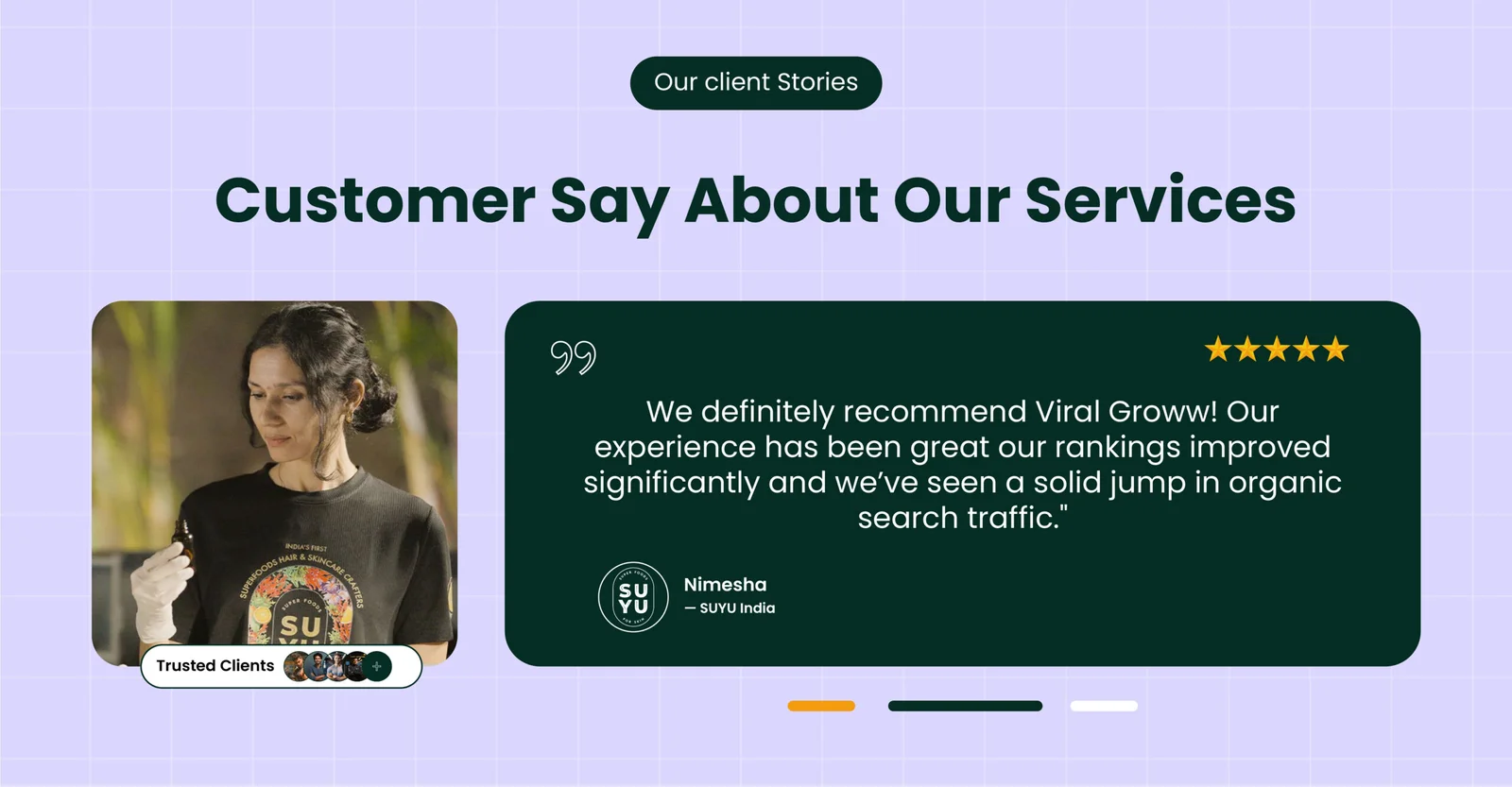
How We 2.5X’d Organic Traffic for SUYU India in Just 5 Months by Following Our White Hat SEO Framework
SUYU India was born with a clear vision—to bring superfood-powered skincare into the Indian market. Co-founded with a deep belief in sustainability.

Scaling a Sexual Wellness Brand with SEO – How We Did It for Ecstasia
Ecstasia is a sexual wellness D2C brand started by Prakhar Raj and Hamid Iqbal in December 2024. Prakhar, a school friend of mine, works in a corporate job but has always wanted to start his own business.
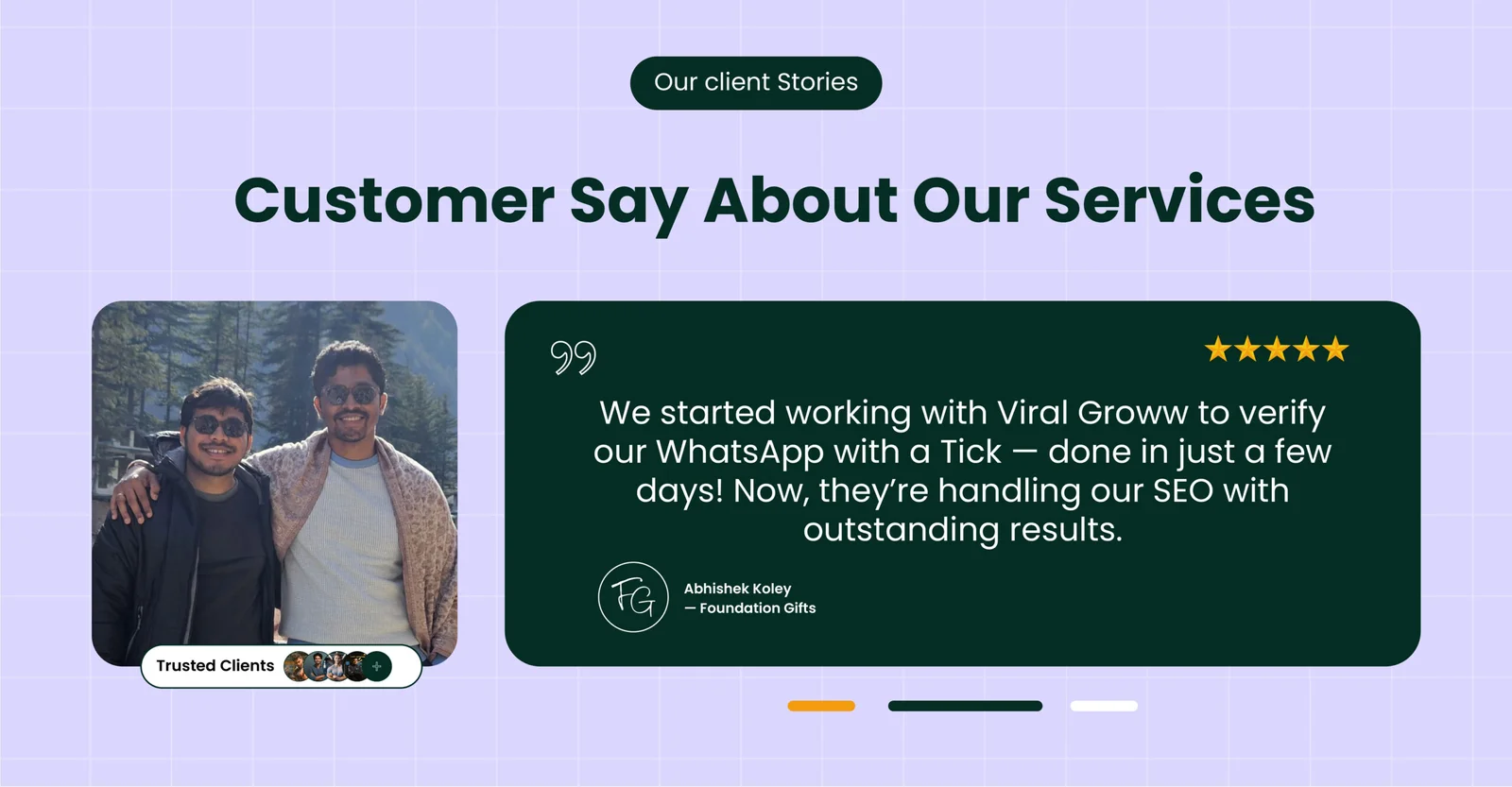
How we got 8.7X Impressions for a gifting D2C brand within 3 Months by doing White Hat SEO
Foundation Gift was started by Rakesh Adak and Abhishek Koley with a simple idea — gifts should feel just as special as the moments they celebrate.
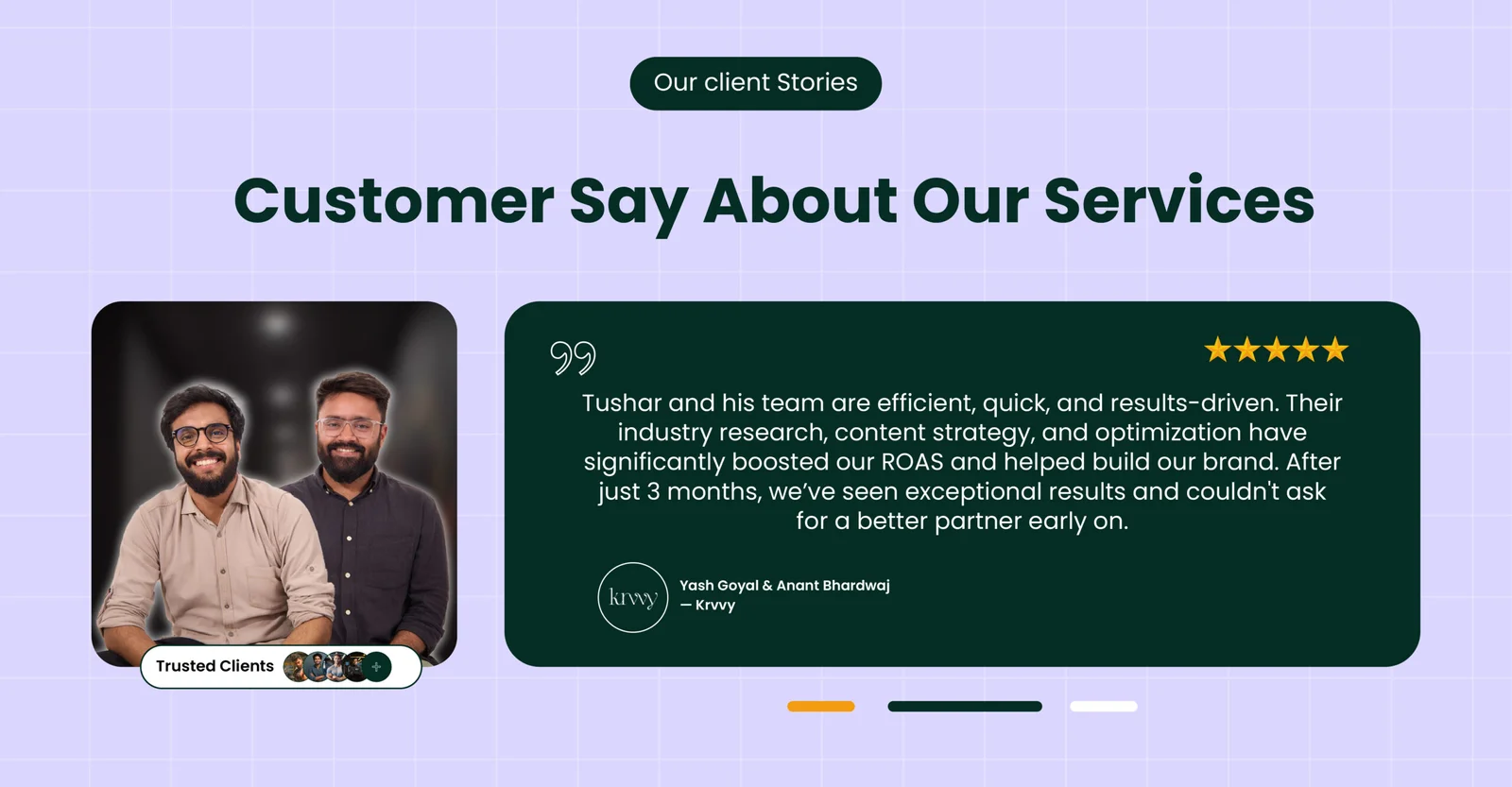
Scaling a Lingerie Brand to 7-Figure Sales in Just 75 Days—Proof Inside!
Krvvy is a modern, forward-thinking lingerie brand committed to redefining comfort and functionality. Designed to elevate the lingerie experience, Krvvy celebrates the beauty of all women, embracing and admiring every curve.
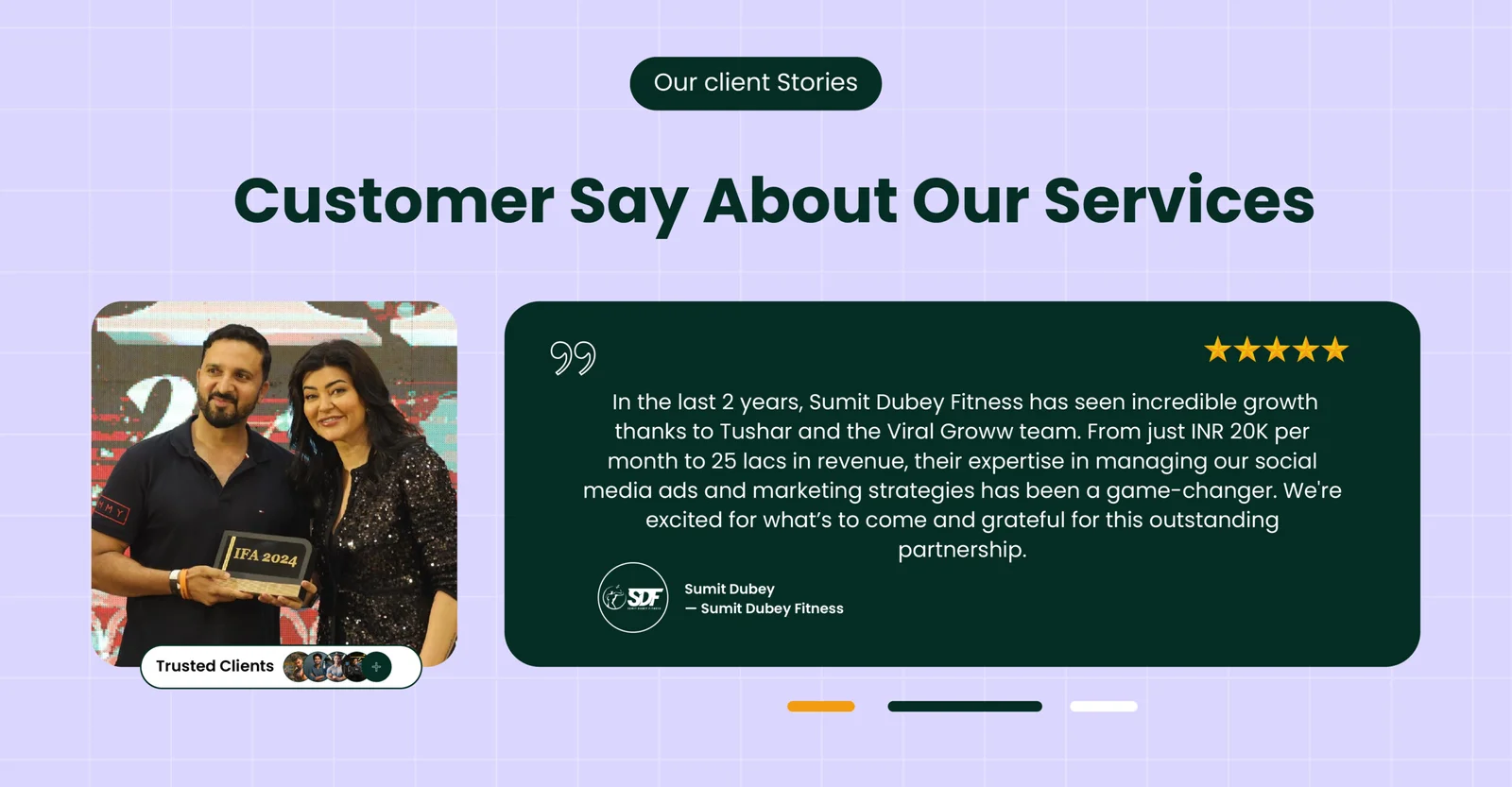
How Sumit Dubey Fitness Classes Transformed into a Fitness Empire with Strategic Digital Marketing
Sumit Dubey Fitness Classes, founded by Sumit Dubey, provides online fitness training with a personalized touch.
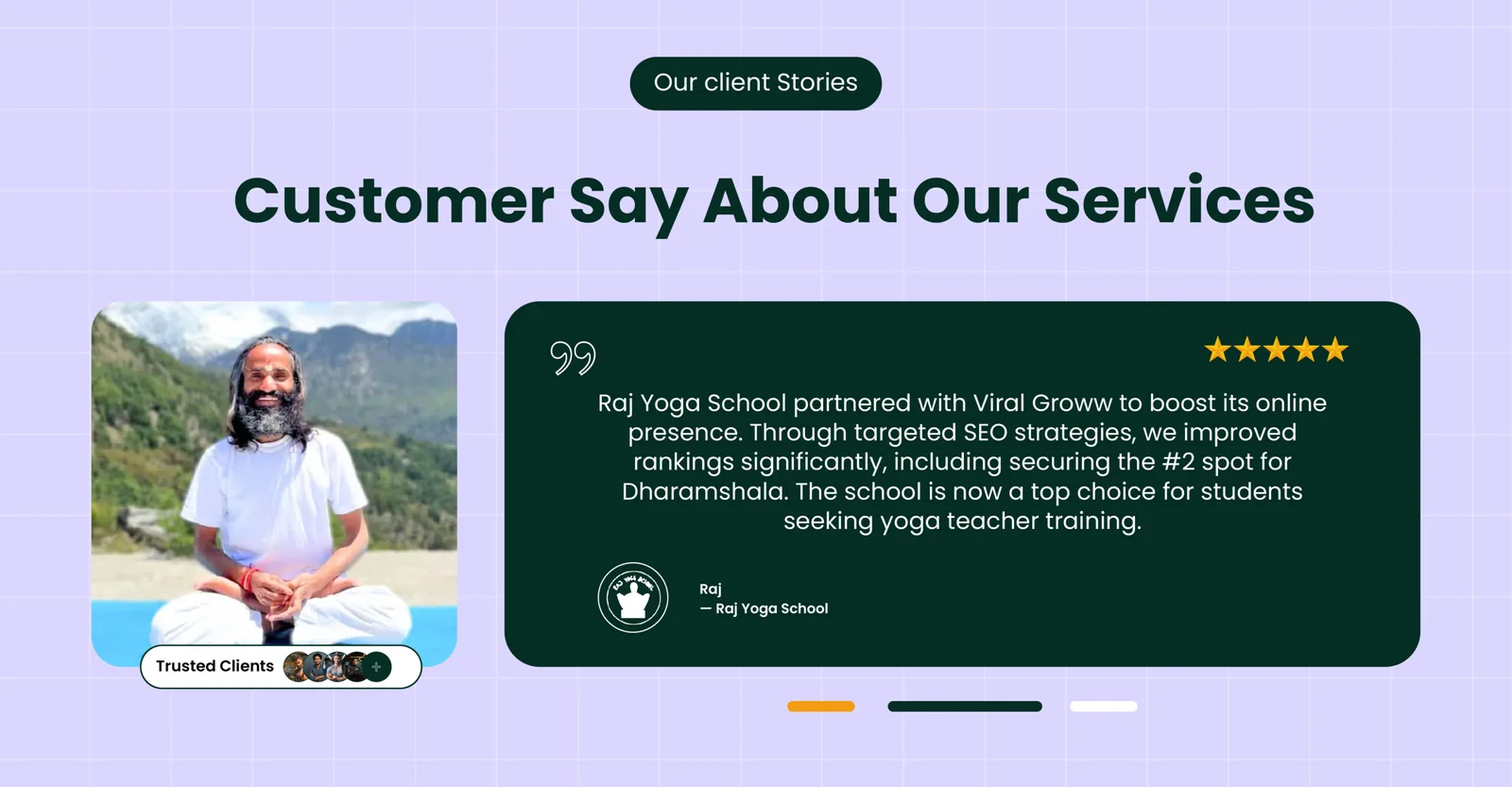
Raj Yoga School’s Journey to the Top of Search Rankings
Nestled between the tranquil peaks of the Himalayas and the sun-kissed beaches of Goa, Raj Yoga School has been a sanctuary for aspiring yoga teachers in India.
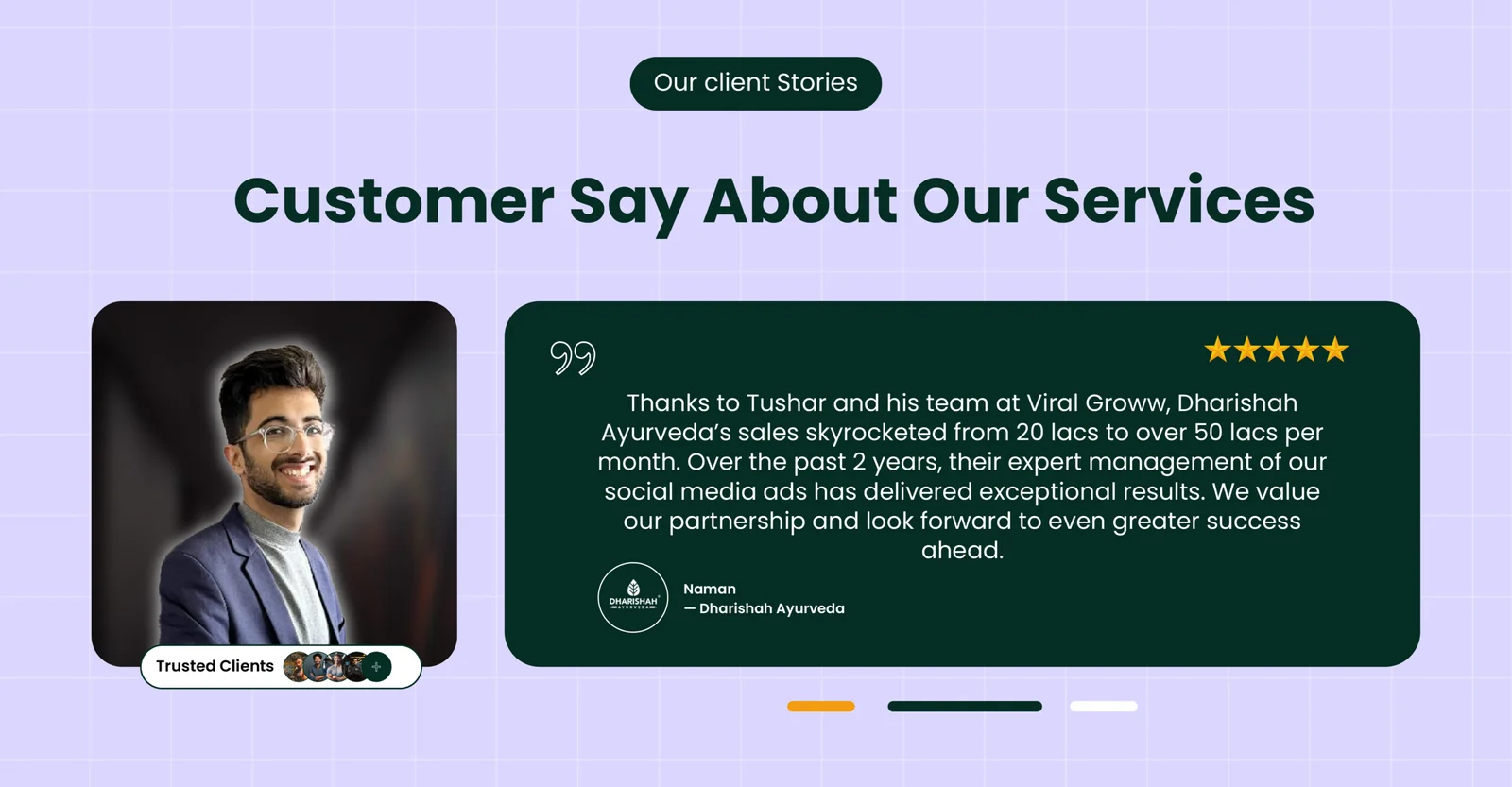
Scaling Dharishah Ayurveda from ₹20 Lakhs to ₹50 Lakhs in Monthly Sales
Dharishah Ayurveda, a promising Ayurvedic brand, had already seen growth through performance marketing, scaling from ₹2 lakhs to ₹20 lakhs in monthly sales (covered in a previous case study).

Building Trust and Revenue for Dharishah Ayurveda with Scalable Facebook Ads
Dharishah Ayurveda, led by CEO Naman Dhamija, is a premium Ayurvedic brand dedicated to promoting natural wellness.
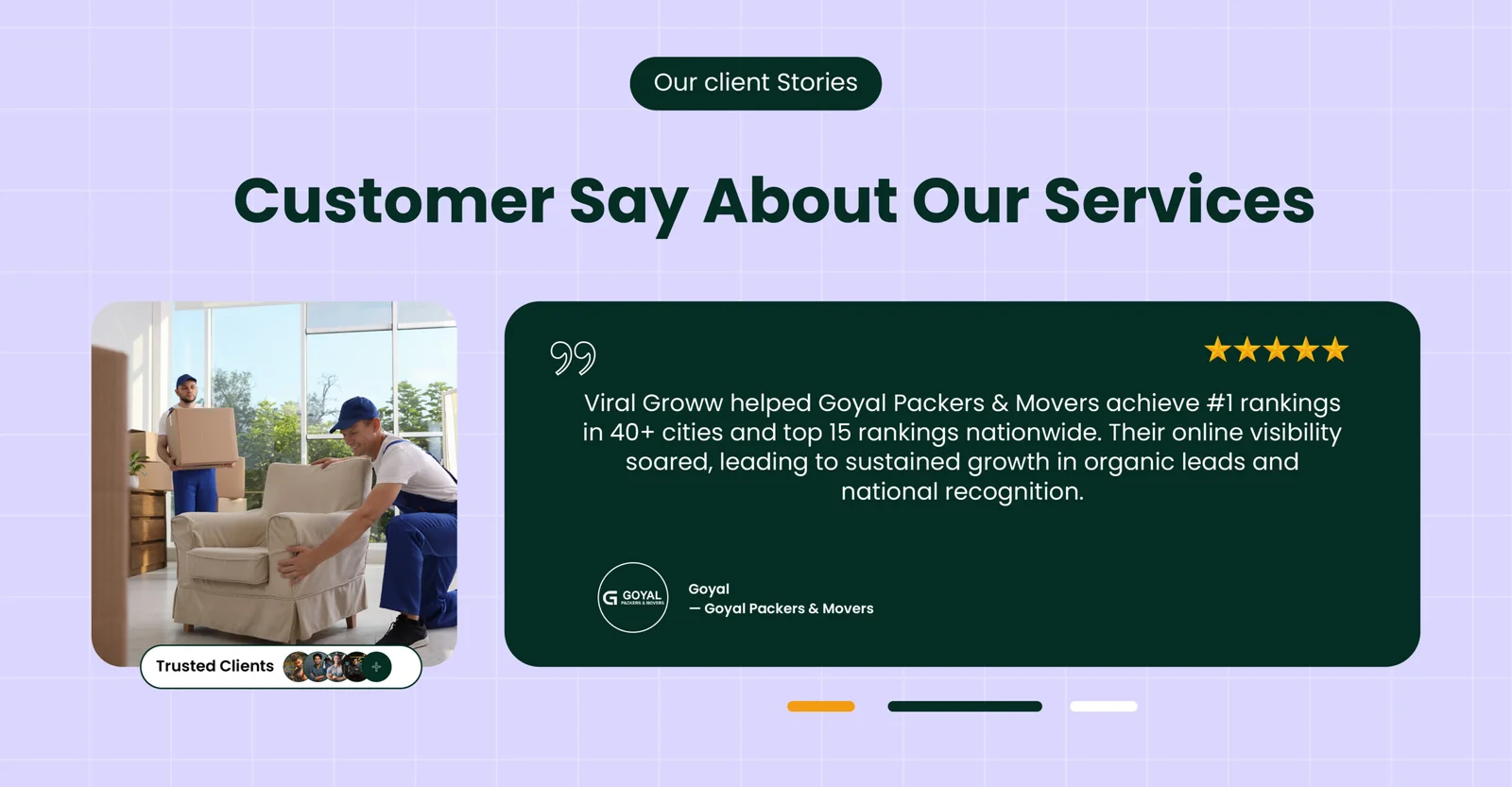
How Goyal Packers & Movers Skyrocketed to #1 in 40+ Cities with White Hat SEO
Goyal Packers and Movers India, owned by Mr. Sampat Singh, is one of the most preferred packers and movers across Northern India, offering exceptional shifting services.





